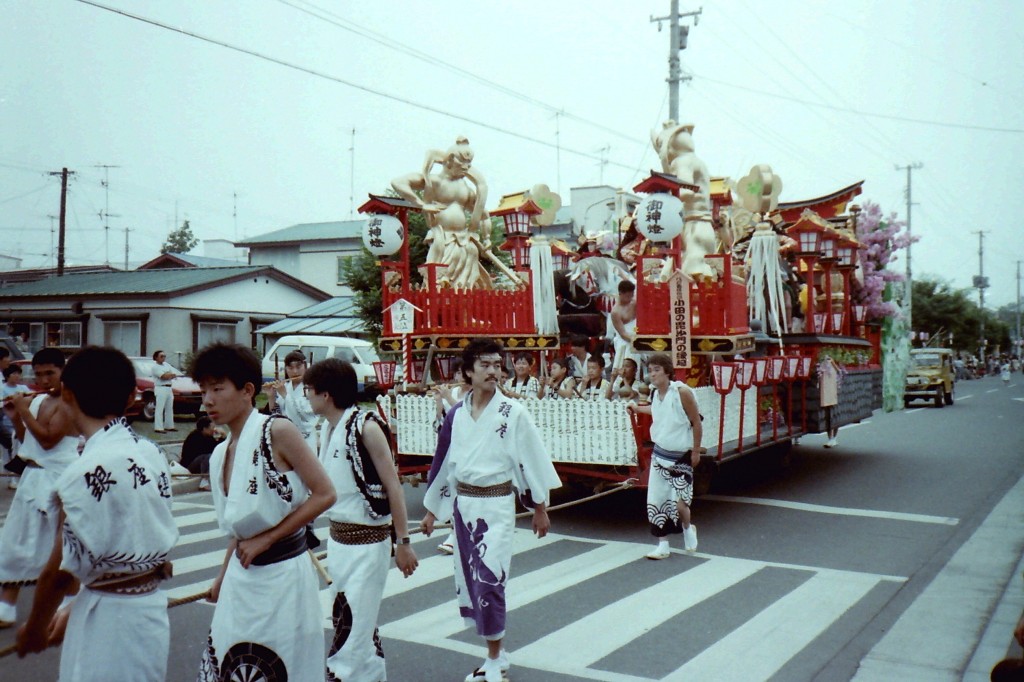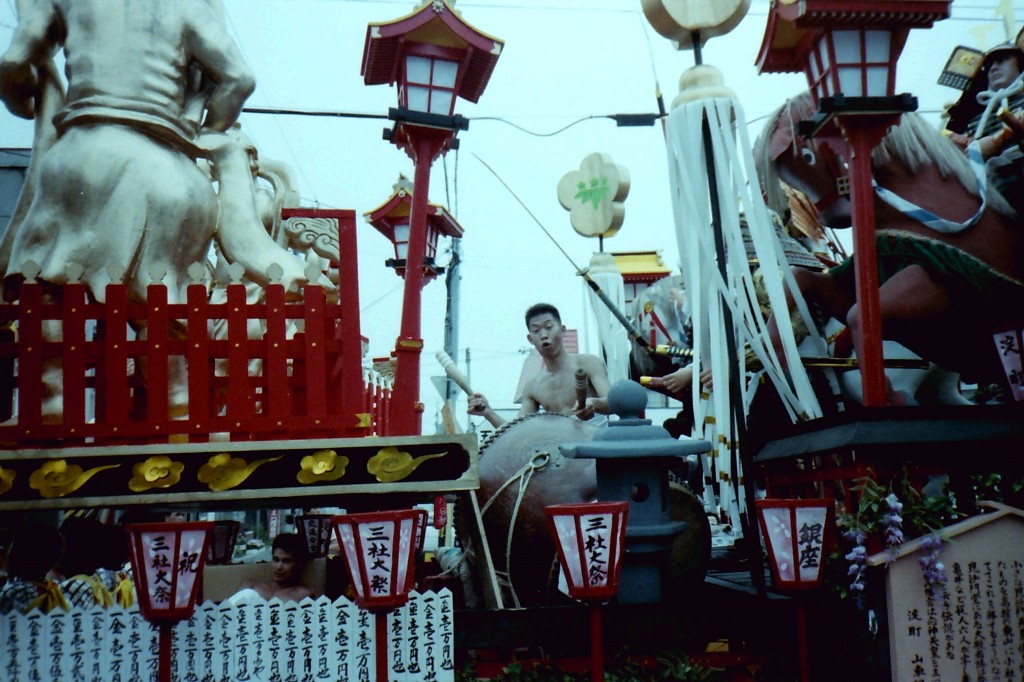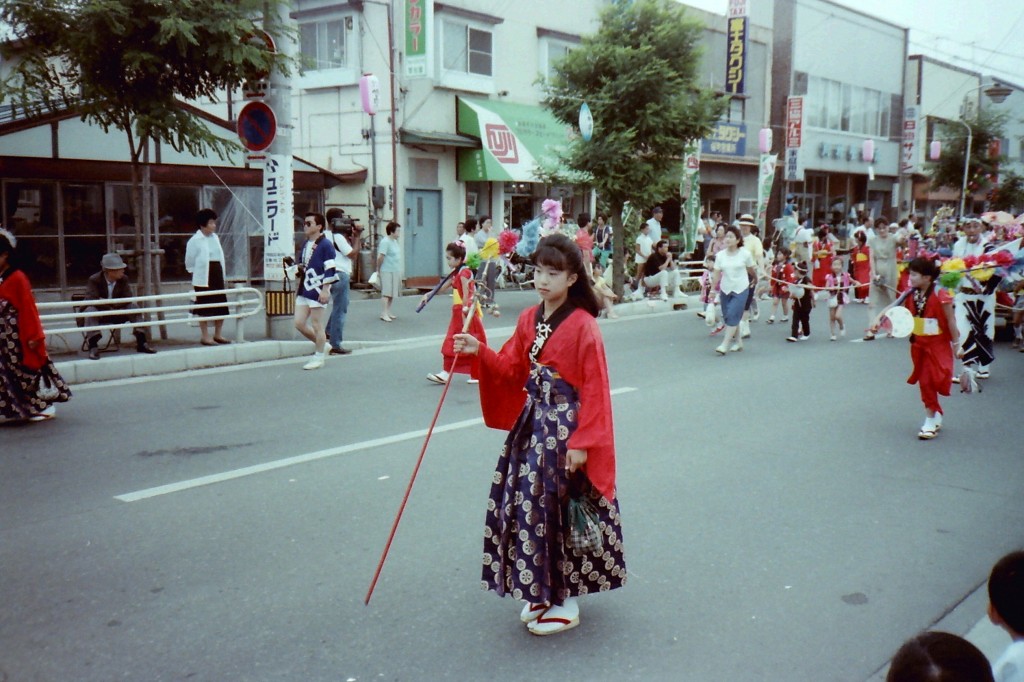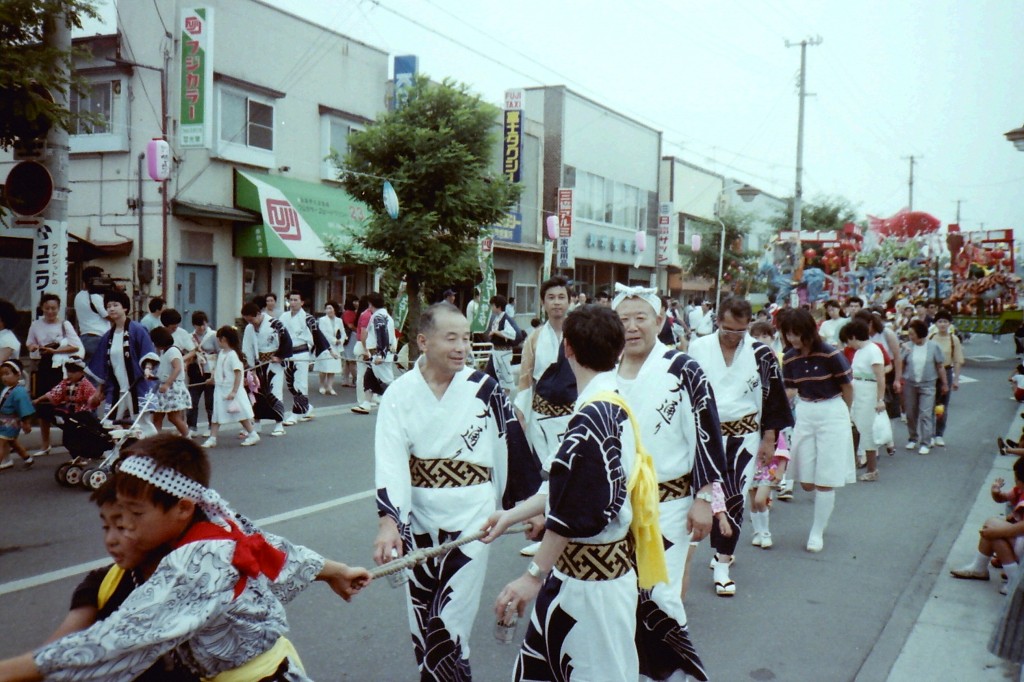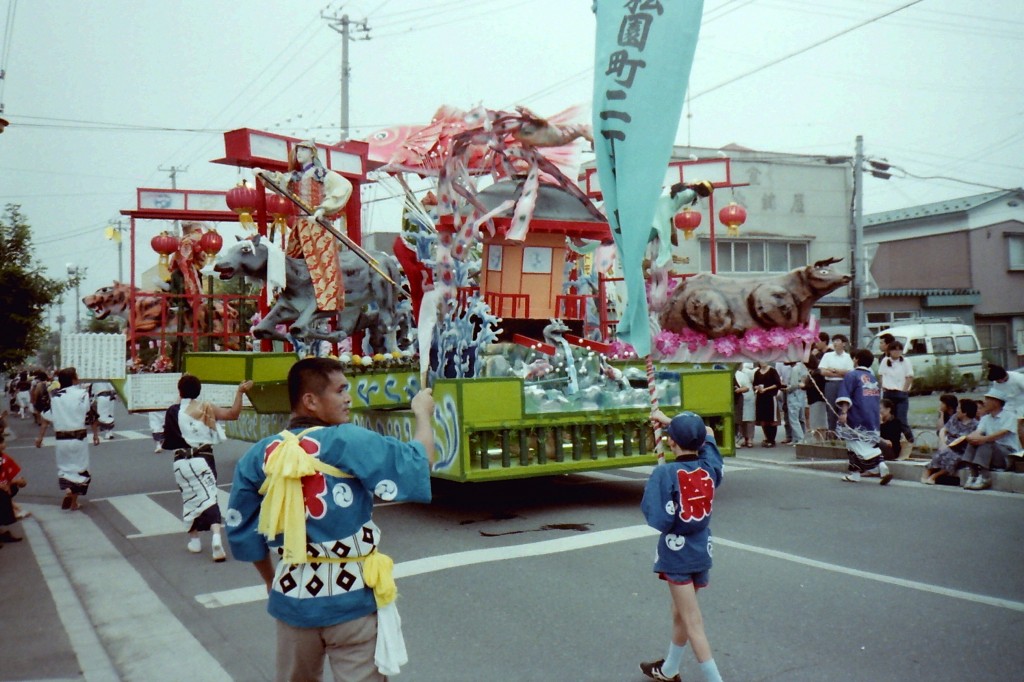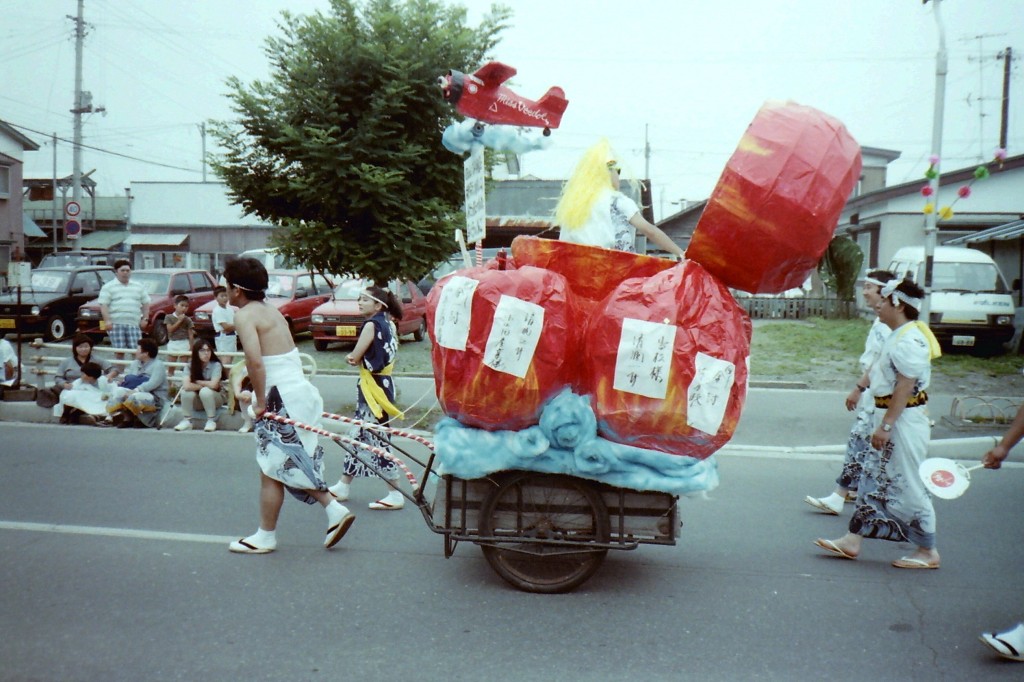At the conclusion of the mikoshi part of the parade, I was free to roam and take photographs. Here are some of the larger floats.
Note that none of these floats are powered by internal combustion engines; they are all people-powered. There are a lot more people powering this one than you can see, but I’ll show you examples later in this post that give you a better idea of how many people it takes.
This taiko drummer’s sticks resemble little baseball bats, don’t you think? Soo desho!
Â
I’m not sure of the significance of this girl’s costume, but it appears to be a fancy hakama (split skirt) with a short kimono or haori.
Â
Even the kids get into the act.
You can’t even see the entire line of people (two lines, that is) pulling this float. I often wondered if those rather small-guage ropes ever broke under the strain.
Note that this float also has a taiko drummer, as well as flute players. That was pretty common in the parade. The flute music they play isn’t exactly what our Western ears are accustomed to, however. Also, note those swing-out wings sporting a tiger and a, uh, I suppose that’s a horse and rider — or, at least, a charicature of such.
Easy come, easy go. Easy for me to say, I suppose — I wasn’t helping pull.
Most Americans have heard the names Lindbergh and Earhart, but they have never heard of Clyde Pangborn and Hugh Herndon. Nor are they familiar with the first flight across the Pacific by the plane depicted here, the Miss Veedol, rising high above the pop-top apple carrying the carbon-based unit.
In 1931, Pangborn and Herndon took off from Misawa’s Sabishiro Beach and flew nonstop to Wenatchee, Washington. Apparently, it was somewhat of an escape, as well, because they were under suspicion of spying. Misawa celebrates this flight in many ways, including using a plane that rides on rails on Green Pole Street in a contest of strength. The “pilot” pulls on a long rope to try to beat the best time for dragging the plane up the street to the finish line. Unfortunately, we Americans know nothing about this flight, and I suspect that is because it originated in Japan. By the way, both Washington and the area near Misawa are known for their apples. I found the largest apples I’ve ever seen somewhere between Misawa and Aomori, and if you will notice, Aomori Bay looks like an apple.

